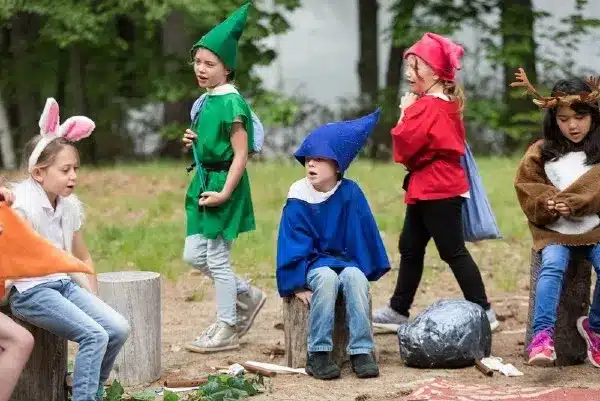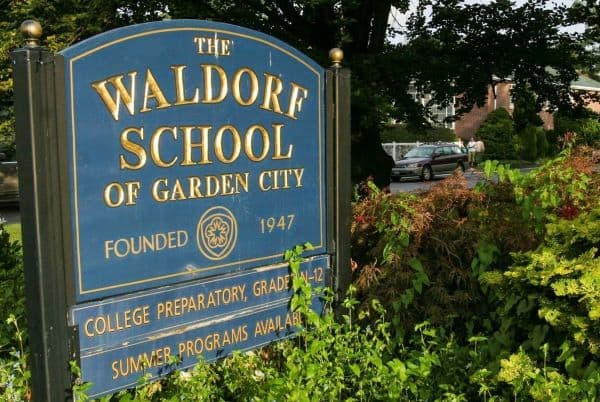Why do Waldorf schools have students, at each grade level, perform a class play? Class plays, often performed in springtime, deepen student’s curriculum, social emotional and collaborative learning.
The plays reflect each grade’s individual curriculum and the appropriate developmental level of the students. Class plays incorporate music, recitation, memorization, acting, and visual arts. The play also meets children at a place of their age’s unique social development — both in story and practice.
The parts within a play begin mostly as chorus in younger grades; as the children grow, so do the expectations for bringing individual characters to life. Waldorf teachers, who have been with their students through all the grades, know them well and can give parts that challenge or complement their students. Plays give students a unique opportunity to grow. They can be guided to emerge or develop from a comfortable place within themselves or perhaps play a part of someone very different and challenging.
While the resulting performance is secondary to the process of learning, the children experience exuberance, pride, and joy bringing their hard work to fruition.
The Waldorf Publication blog — Why a Class Play at Waldorf Schools? sums up the purpose of these plays: “Plays in a Waldorf school are called “pedagogical” dramas for a very good reason. They are aids to the class teacher in developing skill and capacity in students, strengthening the sense of interdependence in the whole class, and brightening the creativity of the class through drama.”
Learn More at: Why a Class Play at Waldorf Schools?
Photo Credit: Pine Hill at High Mowing School





